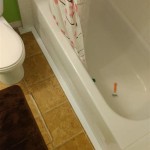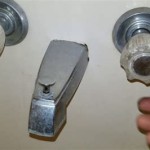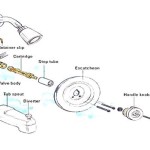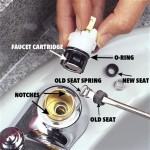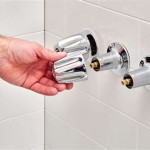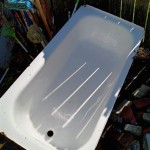What Is A Walk-In Bathtub Called?
Walk-in bathtubs, designed primarily for individuals with mobility limitations, are often referred to by a variety of terms that highlight their key features and intended benefits. While "walk-in bathtub" is the most common and widely recognized name, other terms are frequently used in marketing materials, medical contexts, and general discussions regarding accessibility and aging-in-place solutions. Understanding these alternative names and the subtle nuances they imply can be helpful for both consumers and professionals working in fields such as healthcare, home renovation, and assistive technology.
The prevalence of walk-in bathtubs has significantly increased in recent years due to the aging global population and a growing emphasis on independent living. As a result, manufacturers and retailers have adopted diverse naming strategies to appeal to different customer segments and highlight specific advantages of their products. This article explores the various terms used to describe walk-in bathtubs, their underlying meanings, and the factors that influence their usage.
Alternative Names Highlighting Accessibility
One of the primary reasons for using a walk-in bathtub is to improve accessibility for individuals who struggle with traditional bathtubs or showers. Consequently, several alternative names emphasize this core benefit. The term "accessibility bathtub" or "accessible bathtub" is a straightforward and descriptive option. It directly conveys that the bathtub is designed to be easily used by people with disabilities or mobility challenges. This naming convention is often favored in medical or rehabilitation settings, as it clearly communicates the bathtub's purpose to healthcare professionals and patients.
Another related term is "barrier-free bathtub." This name highlights the absence of obstacles that typically hinder access to a standard bathtub, such as a high threshold. The "barrier-free" designation is also used in broader architectural and design contexts to describe spaces and features that are designed to be universally accessible. Therefore, using this term for a walk-in bathtub reinforces its alignment with the principles of universal design.
"Low-entry bathtub" or "low-threshold bathtub" are also frequently encountered. These names focus on the significantly reduced height of the step-in entry compared to a conventional bathtub. The low threshold minimizes the risk of tripping and makes it easier for individuals with limited leg strength or balance to enter and exit the bathtub safely. These terms are often favored in marketing materials that emphasize the safety and ease of use of the product.
Names Emphasizing Safety and Therapeutic Benefits
Beyond accessibility, safety is a paramount concern for many individuals considering a walk-in bathtub. Consequently, terms that convey a sense of security and stability are often employed. "Safety bathtub" is a simple yet effective way to communicate this benefit. It directly suggests that the bathtub is designed to minimize the risk of accidents and injuries.
In addition to general safety, some walk-in bathtubs offer therapeutic features such as whirlpool jets or air massage systems. In these cases, the terms "therapeutic bathtub" or "hydrotherapy bathtub" may be used. These names highlight the potential health benefits of using the bathtub, such as pain relief, improved circulation, and muscle relaxation. These terms are particularly common when marketing walk-in bathtubs to individuals with specific medical conditions, such as arthritis or fibromyalgia.
Furthermore, the term "bariatric bathtub" is specifically used for walk-in bathtubs designed to accommodate individuals with larger body sizes. These bathtubs typically have wider doorways, reinforced frames, and higher weight capacities to ensure safety and comfort for users of all sizes.
Descriptive Names Based on Operational Features
Some alternative names for walk-in bathtubs focus on the unique operational features that distinguish them from traditional bathtubs. The term "door bathtub" directly refers to the prominent feature of these bathtubs: a watertight door that allows users to enter and exit without stepping over a high wall. This is a straightforward and easily understandable description.
Another descriptive term is "sit-in bathtub." This name highlights the fact that most walk-in bathtubs are designed for users to sit rather than recline during bathing. The sit-in design is often preferred for individuals who have difficulty getting up and down from a lying position. It also provides a more upright and stable posture, which can be beneficial for those with balance issues.
"Inward swinging door bathtub" or "outward swinging door bathtub" are more specific terms that describe the direction in which the door opens. The choice between an inward or outward swinging door can depend on the bathroom layout and the user's personal preferences. An inward swinging door may require more space inside the bathtub, while an outward swinging door may require more clearance in the bathroom.
"Soaking tub with door" is another variation that emphasizes the bathtub's primary function while simultaneously highlighting its distinguishing characteristic. This term is often used to convey that the bathtub is suitable for a traditional soaking experience while also providing the added accessibility of a walk-in design.
Beyond the door itself, the sealing mechanism is also a key feature of walk-in bathtubs. Therefore, some marketing materials may refer to "watertight door bathtubs" to emphasize the reliability and effectiveness of the door's seal. This is particularly important for preventing leaks and ensuring a safe and comfortable bathing experience.
Influences on Terminology Usage
The specific term used to describe a walk-in bathtub can be influenced by several factors, including the target audience, the marketing strategy, and the context of the discussion. For example, in medical settings, terms like "accessibility bathtub" or "therapeutic bathtub" may be preferred due to their clarity and clinical relevance. In contrast, marketing materials aimed at seniors may use terms like "safety bathtub" or "low-entry bathtub" to emphasize the ease of use and peace of mind that these bathtubs provide.
The manufacturer's brand identity and marketing style also play a role in the terminology used. Some manufacturers may prefer to use more technical or descriptive terms to highlight the engineering and design features of their products, while others may opt for simpler and more emotionally appealing names to connect with consumers on a personal level.
Online search behavior and keyword optimization also influence the terminology used in online marketing and product listings. Manufacturers and retailers often conduct keyword research to determine which terms are most commonly used by consumers searching for walk-in bathtubs. They then incorporate these keywords into their website content and product descriptions to improve their search engine rankings and attract more potential customers.
Finally, the evolving nature of the industry and the introduction of new features and technologies can also lead to the emergence of new terms. As walk-in bathtubs become more sophisticated and offer a wider range of therapeutic and convenience features, it is likely that new terminology will continue to develop to accurately describe these advancements.
In conclusion, while "walk-in bathtub" remains the most widely recognized and commonly used term, a variety of alternative names are employed to describe these accessibility-focused bathing solutions. These alternative names often emphasize specific benefits such as accessibility, safety, therapeutic value, or unique operational features. The specific term used can be influenced by factors such as the target audience, marketing strategy, and the context of the discussion.

Common Types Of Walk In Tub Models Kohler Bath

How Does A Walk In Bath Work

Common Types Of Walk In Tub Models Kohler Bath

Walk In Bathtub What Are The Major Pros And Cons

How Does A Walk In Bath Work Premier Care Bathing

How Do You Get Out Of A Walk In Bathtub Ez Mobility Solutions

Na 47 Inch Walk In Tub Quick Fill Whirlpool Bath Boundless

Walk In Baths Safe Accessible Solutions For Your Home

Best Walk In Tub Features For Seniors Kohler Bath

What Are The Pros And Cons Of Walk In Baths
Related Posts

